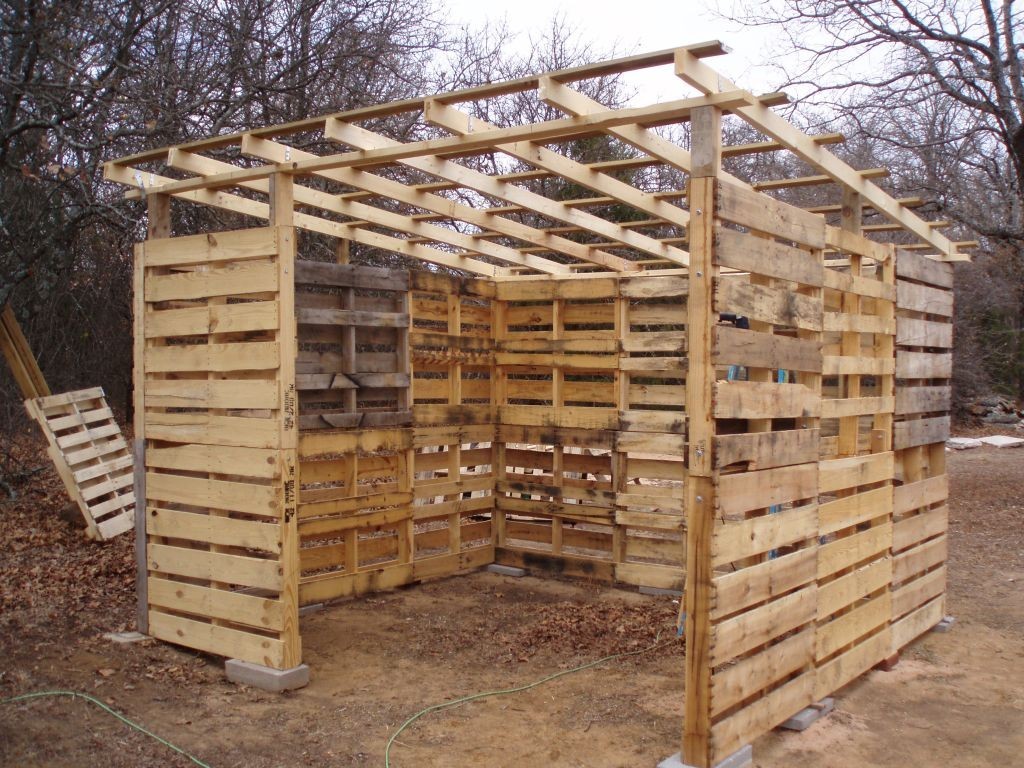Thursday, 21 November 2024
Step-by-Step Guide to Building a Pallet Shed DIY on a Budget

Constructing a Budget-Friendly Pallet Shed: A Comprehensive DIY Guide
This guide provides a detailed, step-by-step approach to building a cost-effective pallet shed, suitable for individuals with moderate DIY skills. The emphasis is on maximizing resource utilization and minimizing expenditure while maintaining structural integrity and weather resistance. This project requires careful planning and execution; safety precautions should be prioritized throughout.
Phase 1: Planning and Material Acquisition
Before commencing construction, thorough planning is paramount. This phase involves determining the shed's dimensions, location, and material sourcing.
1.1 Defining Shed Specifications
The first step is to determine the required dimensions of your pallet shed. Consider the intended use and the available space. A detailed sketch, including measurements for length, width, and height, is crucial for accurate material estimation and construction. Also, consider the desired features, such as a door, windows, and a roof overhang for additional weather protection. Ensure adherence to local building codes and regulations throughout the design process.
1.2 Sourcing Recycled Pallets
The foundation of this project lies in acquiring free or inexpensive pallets. Several avenues exist for sourcing these materials:
- Local Businesses: Contact nearby businesses, such as supermarkets, warehouses, and construction sites. Many are happy to dispose of used pallets for free or a nominal fee.
- Online Classifieds: Websites and apps dedicated to classified advertisements often feature free or inexpensive pallets.
- Recycling Centers: Some recycling centers may offer pallets for a small fee or even for free.
1.3 Gathering Additional Materials
While pallets form the primary structure, additional materials are required for a complete and weather-resistant shed. This includes:
- Concrete Blocks or Foundation: A solid foundation is essential for stability. Concrete blocks provide a cost-effective and durable solution. Alternatively, a compacted gravel base can suffice for less demanding applications.
- Roofing Material: Select a budget-friendly yet weather-resistant option, such as tarpaulin, corrugated metal sheeting, or recycled roofing felt. Consider the climate and local weather conditions when making this choice.
- Fasteners: Galvanized nails, screws, and appropriate connectors are required to secure the pallets and other components. The choice of fastener depends on the type of wood used in the pallets. Consider using exterior-grade fasteners for increased durability.
- Wood Treatment: A wood preservative or sealant helps protect the pallets from rot, decay, and insect infestation. Ensure compliance with environmental regulations when selecting and applying wood treatment.
- Door and Window Materials (Optional): If incorporating a door and/or windows, acquire the necessary materials, such as wood planks, hinges, and window panes. Consider repurposing existing materials to further reduce costs.
Phase 2: Construction
This phase details the assembly of the pallet shed. Safety measures such as wearing appropriate protective gear (safety glasses, gloves, work boots) are essential throughout the construction process.
2.1 Foundation Preparation
Begin by preparing a level foundation. For a concrete block foundation, lay the blocks to the desired dimensions, ensuring a level and stable base. For a gravel base, compact the gravel thoroughly to provide a stable surface for the pallets.
2.2 Pallet Assembly
Carefully assemble the pallets to form the shed’s walls. Ensure the pallets are firmly connected using appropriate fasteners. For added stability, consider using additional bracing or supports between pallets. Plan the placement of doors and windows at this stage to avoid potential conflicts with pallet configuration.
2.3 Wall Construction and Securing
Begin by erecting the walls using the assembled pallets. Secure the pallets to the foundation using concrete screws or other appropriate fasteners. Ensure vertical alignment and plumbness. Once the walls are in place, reinforce the corners by using additional bracing or by interlacing the corner pallets.
2.4 Door and Window Installation (Optional)
If including a door and windows, install these according to your chosen design. Ensure a secure fit and weatherproofing around the frames to prevent drafts and leaks. Use appropriate hinges and locking mechanisms.
2.5 Roof Construction
The roof design depends on the desired aesthetic and structural considerations. A simple gable roof is relatively easy to construct and provides adequate weather protection. Attach the roofing material securely, ensuring proper overlap and waterproofing. Consider adding flashing around the edges of the roof for additional weather protection.
Phase 3: Finishing Touches and Maintenance
The final phase involves adding finishing touches and implementing a maintenance plan to ensure the longevity of the shed.
3.1 Weatherproofing
Apply a wood preservative or sealant to all exposed wooden surfaces to protect against moisture damage and insect infestation. Ensure complete coverage for maximum protection. Seal any gaps or cracks in the walls and roof to prevent air leaks and water ingress.
3.2 Interior Finishing (Optional)
Consider adding an interior finish, such as paint or plywood sheeting, to improve aesthetics and enhance insulation. Ensure good ventilation to prevent moisture buildup inside the shed.
3.3 Ongoing Maintenance
Regular inspection and maintenance are crucial for the longevity of your pallet shed. Check for any signs of damage or deterioration, and address any issues promptly. Re-apply sealant or wood preservative as needed to maintain protection against the elements.
By following this comprehensive guide, you can successfully construct a functional and cost-effective pallet shed. Remember that careful planning, attention to detail, and adherence to safety practices are essential for a successful outcome. This project offers a sustainable and budget-conscious approach to building a practical storage solution.
No comments:
Post a Comment